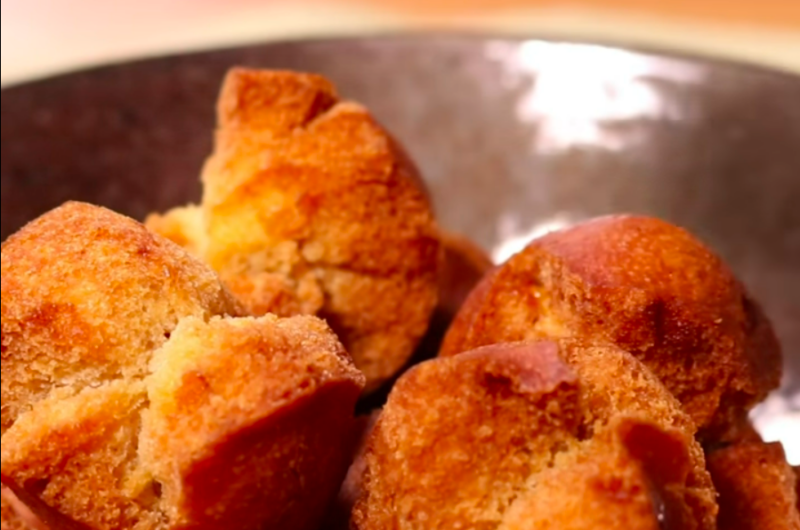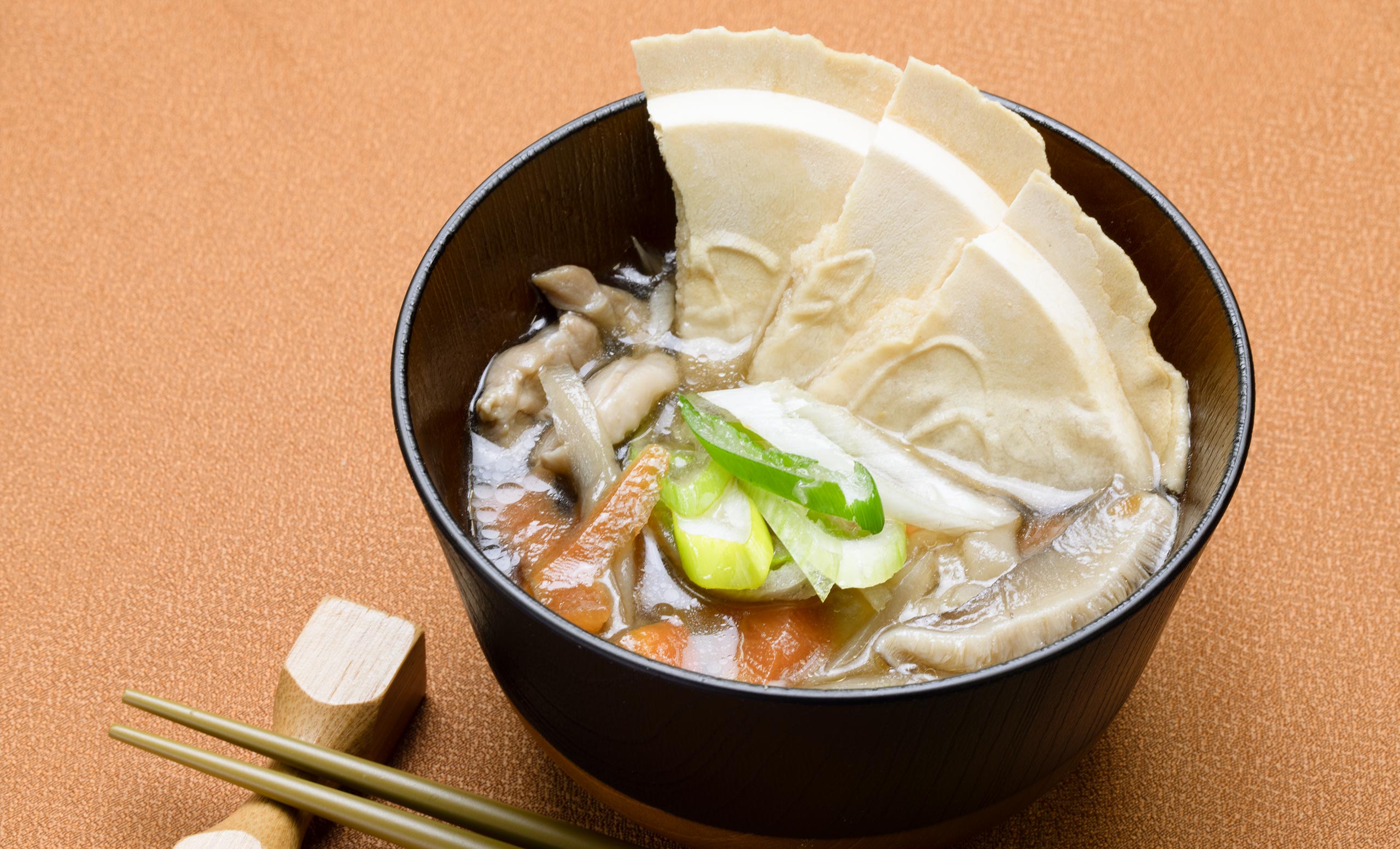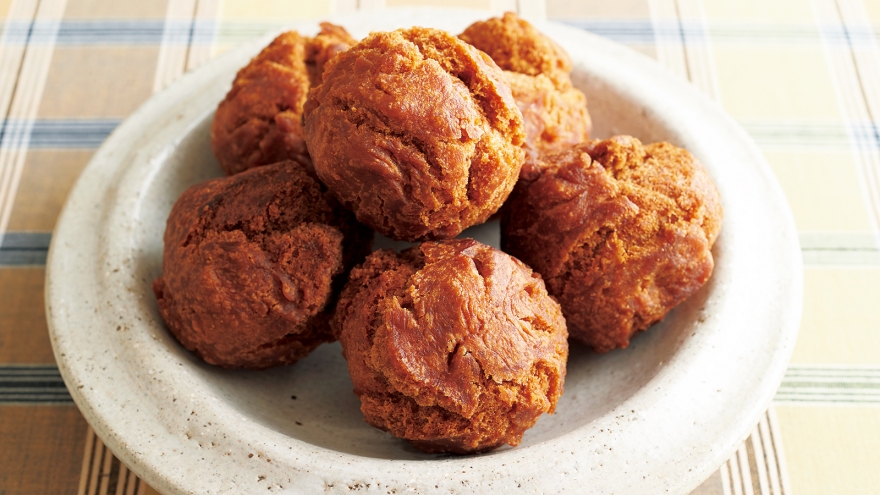
Sata Andagi (サーターアンダギー) is a traditional fried sweet from Okinawa Prefecture (Kyushu Region).
You can think of it as an Okinawa-style donut.
In Okinawan dialect, sata means sugar, and andagi is a combination of the words anda ( oil ) + agi ( fried ). Combined together, it basically means something like “sugar fried in oil”. Delicious! 🤣
Sata andagi are made by frying in low heat, and have cracks on the top which is said to resemble a smile.
Read on for more interesting info about sata andagi:
Ingredients
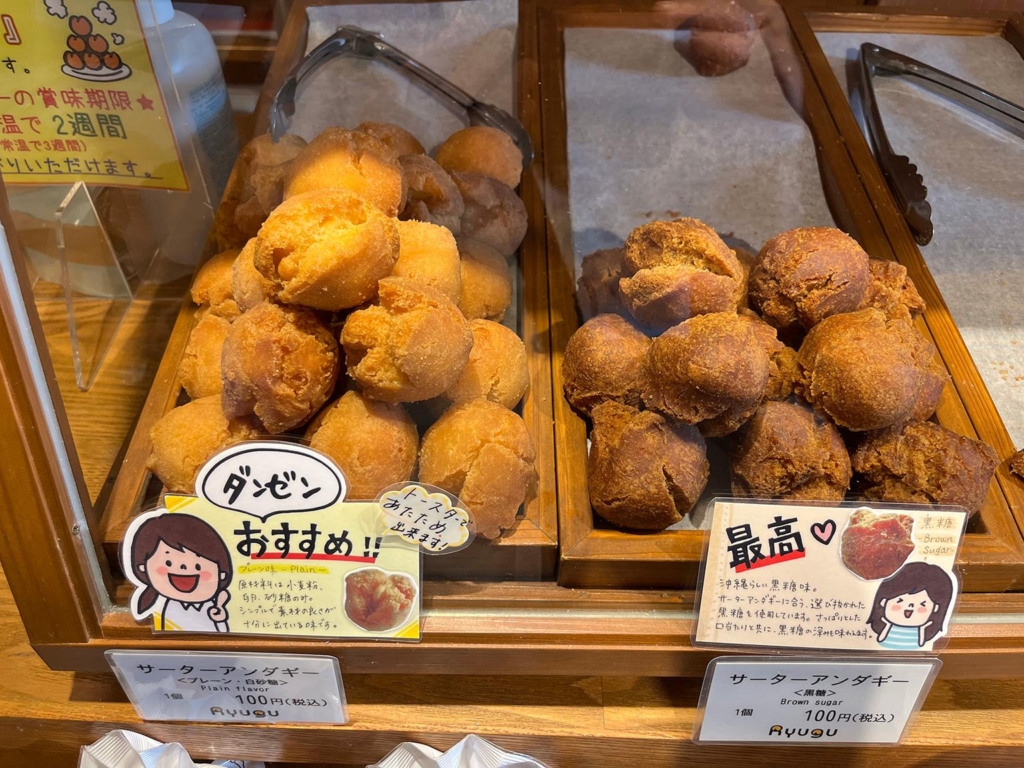
The main ingredients of Sata Andagi are:
- Sugar
- Flour
- Egg
Similar to a typical Western style donut, the main ingredients of sata andagi are flour, sugar, and egg. No water, or milk is used, which helps sata andagi stay fresh longer without refrigeration.
Brown sugar is also commonly used instead of white sugar. This gives it a brown color, and is referred to as “black” sata-andagi.
These days, many different flavors (and colors) can be found such as sweet potato, pumpkin, matcha, and chocolate.
Location / Where to Eat
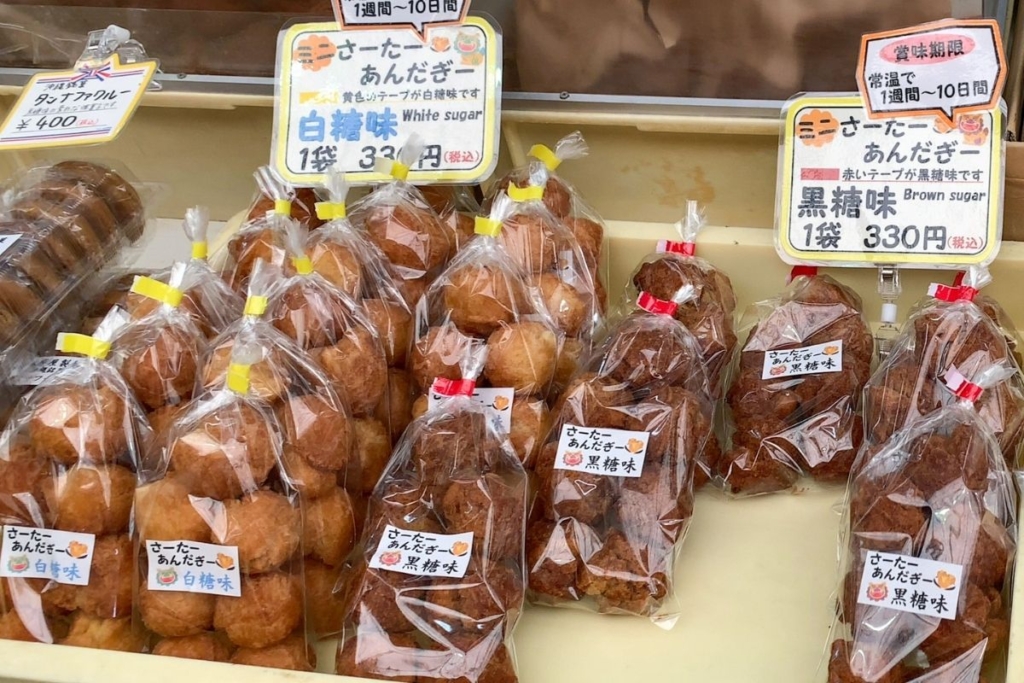
Sata andagi can be found all around Okinawa.
They are sold in various souvenier shops, supermarkets, and restaurants. There are even some small specialty shops that only sell sata andagi.
If you are ever in Okinawa, make sure to give it a try!
You can also make it at home, and there are some special sata andagi flour mixes you can buy (similar to pancake mix).
History / Origin of Sata Andagi
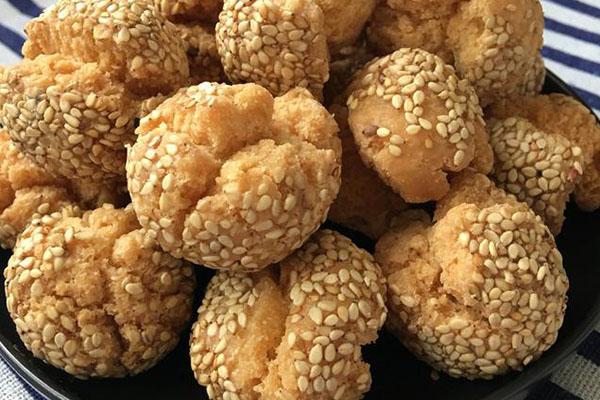
The original version of sata andagi is thought to have been first introduced to Okinawa from China hundreds of years ago. At the time, Okinawa was known as the Ryukyu Kingdom.
Sata Andagai is based off a similar looking Chinese confectionary treat called “kai kou xiao” (開口笑).
Originally, sata andagi was a very expensive (i.e. high-class) item that was only eaten by royalty or during celebratory occasions (sugar was rare and expensive back then).
It was not until the 1970s when sugar became abundantly available, that this Okinawan donut became available to the mass public.
How to make Sata Andagi
It is not too difficult to make Okinawa’s famous donuts. If you’ve ever made some sort of cake, it is very straight forward:
Simply make the dough, roll it into little balls, and fry it!
To make super authentic sata andagi, you will need some Okinawan brown sugar, though it is not really necessary.
Check out this great recipe adapted from kurashiru:
Easy Sata Andagi Recipe (サーターアンダギー)
Course: egg, flour, Ingredients, Japanese Foods, Kyushu, Location, Okinawa4
servings30
minutes40
minutes300
kcalHere is a simple recipe to make Okinawan style donuts — sata andagi. Original recipe via kurashiru
Ingredients
Cake flour … 150g
Baking powder … 1 teaspoon
Egg …1
Brown sugar … 70g
Salad oil … 1 teaspoon
Frying oil … appropriate amount
Directions
- Mix egg and brown sugar in a bowl, then add the salad oil, and mix all together well.
- Sift flour and baking powder together into the egg/sugar mixture. Then, mix together gently with a spatula until it forms a dough ball.
- Use your hands to roll out approximately 15 donut balls from the mixture. Oil your hands first so the dough doesn’t stick to you.
- Pour about 4cm of frying oil into your pan. Heat to 150℃-160℃, and fry for about 4 minutes until cracks form and the balls turn golden brown.
- Drain the oil, let cool, and serve in a bowl.
- Enjoy!
Recipe Video
Notes
- One key to making sata andagi is to fry slowly at a low temperature of around 150-160℃.
Summary
Have you ever tried sata andagi before? What did you think of it?
I remember the first time I tried sata andagi was at a hotel I was staying at in Okinawa. I didn’t know what it was, and asked — is this salty or sweet? 😅
Leave your thoughts and comments below!
Subscribe for free today! Receive cool recipes, my latest Japanese knife picks and learn about Japanese culture. Delivered every other week to your inbox.
